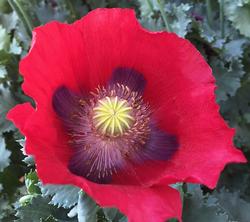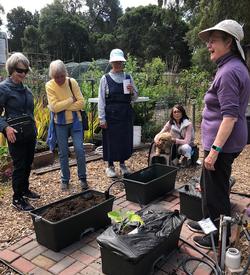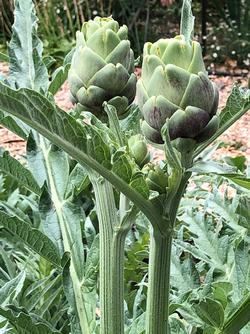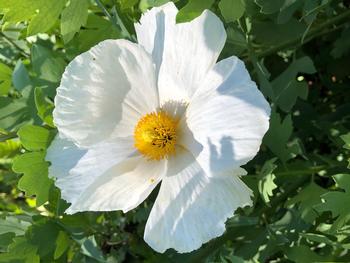Palo Alto Demo Garden
Address: 851 Center Dr, Palo Alto, CA 94301 (View map)
Directions: The Palo Alto Demonstration Garden (PADG) is located at Eleanor Pardee Community Gardens, on Center Drive near Martin Street.
Visiting hours
- The 'Edible' Garden is open to the public during our weekly workdays (Monday 9 am—12 noon and Friday 9 am—11 am, weather permitting) and when events are scheduled. The garden may be viewed over the fence when not open.
- The Water Wise Garden is open dawn to dusk.
- Open Garden Days: Both gardens are open and staffed by Master Gardeners every Saturday morning, 10 am to noon, from May through September (weather permitting). It is an opportunity for the public to explore the edible and ornamental gardens, ask questions, and get plant and garden advice.
- First Saturdays of the month frequently include a workshop.
- We welcome community volunteers during visiting hours to work and learn side-by-side with us.
The 'Edible' Garden
The enclosed area for edible plantings covers one-half of the PADG area. This area was once a bare-earth parking area for city vehicles. The garden displays innovative approaches to edible landscaping, with seasonally appropriate vegetable and fruit selections. It includes in-ground and raised bed areas, a wheelchair accessible (easy access) bed, container plantings (including self-watering systems), a composting area, and worm bins. The food we grow is donated to the Palo Alto Downtown Food Closet.This garden combines fruit trees, berry bushes, vegetables, herbs, and flowers to create an aesthetically pleasing design. Flowering plants attract beneficial insects. Drip irrigation promotes water efficiency. Exhibiting a set of horticultural "best practices" for home gardens, the beds illustrate the use of proper soil preparation, seasonal cover cropping, seeding, planting, trellising, staking, plant protection, and efficient irrigation practices as well as a variety of vegetable choices.
The Water Wise Garden
The Water Wise Garden (always open to the public) demonstrates how native California and Mediterranean climate plants can be used to create a beautiful, low water, natural garden. Once established, the plants in this garden require a minimum of supplemental summer water and provide food and shelter for beneficial insects, butterflies, and birds. The diversity of plants and the presence of beneficial insects keep the garden healthy without the use of pesticides. The mulch on the beds helps reduce water evaporation and breaks down slowly releasing nutrients for the plants.On mulched pathways, visitors can meander among six areas and enjoy the huge variety of plants. Each of the beds has its own distinct plant groupings as well as common plants that tie the garden together. For example, one of the areas demonstrates low-water lawn alternatives (native mow-free grass blend, kurapia, blue fescue, dymondia, and wooly thyme), and another bed is planted only with California natives growing under Oaks.
Most of our California native plants are planted directly in our native soil, which is a fertile, moderately well draining clay soil. Our non-native plants have been planted on one-foot mounds composed of gravelly, well draining soil with little or no organic matter.
There is signage throughout the garden as well as information about individual plants kept inside the edible garden. See our Water Wise Plants pages to search for plants to suit your own landscaping needs.










